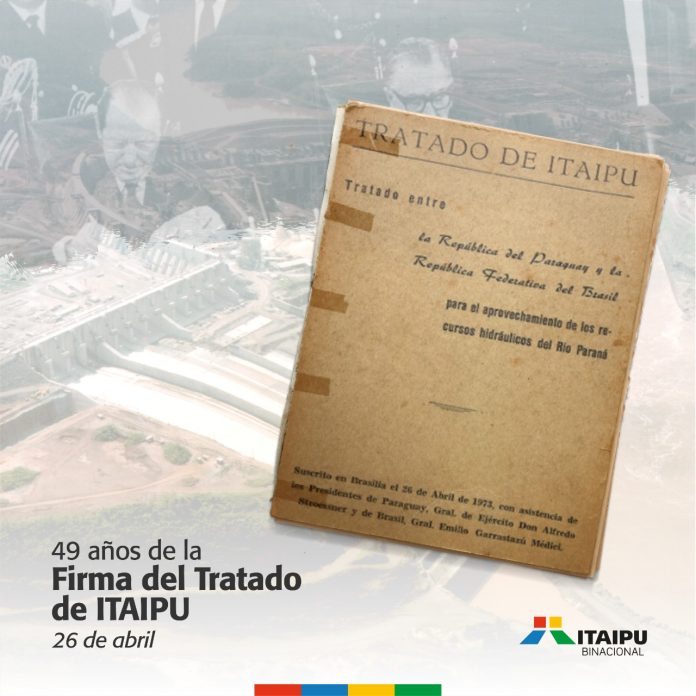Agencia IP.- On a day like today, April 26, 1973, the document that would change the history of Paraguay and Brazil, whose border differences found a solution in a monumental work for the hydroelectric use of the hydraulic resources of the Paraná River, was created. , belonging in condominium to the two countries, from and including the Salto del Guairá or Salto Grande de Sete Quedas to the mouth of the Yguazú River.
The signing of the treaty took place 49 years ago in the Palacio de la Meseta, in Brasilia (Brazil), and the then presidents of Paraguay, Army General Alfredo Stroessner, and of Brazil, Army General Emilio Garrastazu Médici, intervened. The document laid the foundations for the construction of the largest hydroelectric power plant in the world.
The Itaipu Treaty was approved in Paraguay by Law No. 389 of July 17, 1973, and in Brazil by Legislative Decree No. 23 of May 30, 1973.
It is considered as a reference in binational agreements; After its ratification in the respective congresses, the company Itaipu Binacional was created in May 1974 to build and manage the plant. Later, that same year, the first machines began to arrive at the construction quarry to start the mega-venture.
In addition to the fraternal friendship ties between Paraguay and Brazil and the common interest in concretizing the hydroelectric use of the hydraulic resources of the Paraná River, the signing of the Itaipu Treaty led to compliance with the provisions of the Final Act signed in Foz de Yguazú, on June 22, 1966, regarding the division in equal parts, between the two countries, of the electrical energy eventually produced in the referred section.
Likewise, the provisions of Article VI of the River Plate Basin Treaty were taken into account; what is established in the Declaration of Asunción on the use of international rivers, of June 3, 1971, and the studies of the Mixed Brazilian-Paraguayan Technical Commission constituted on February 12, 1967.
Through this alliance, it became the example of solidary cooperation between two nations, which decided that its limits be the cornerstone of the Hydroelectric Power Plant, to unite, instead of dividing, and to be a record work, due to the magnitude and due to its unique characteristics.
Treaty Structure
The Binational is governed by the normative bodies that gave it life, in this case, the Treaty with its 25 articles and the three Annexes, from which it arises. Annex A includes the Statute that was approved in 1986 and is still in force, replacing the one originally established in 1973.
Annex B, which includes the General Description of the Facilities for the Production of Electric Power and Auxiliary Works. Annex C, which establishes the Financial and Provision Bases for Itaipu’s Electricity Services.
colossal work
The plant has 20 generating units, of which ten generate at 50 Hz, which is the Paraguayan frequency, and ten at 60 Hz, the frequency used in Brazil.
The incredible numbers of the Binational always motivated impressive comparisons, such as the fact that the 60 million cubic meters of earth and rock excavated in the hydroelectric plant would fill a line of dump trucks 128,000 kilometers long, which corresponds to three times the circumference of the planet Earth.
In the almost 38 years of generation, from May 5, 1984 to date, Itaipu’s accumulated energy production has been around 2,849,005 GWh.





